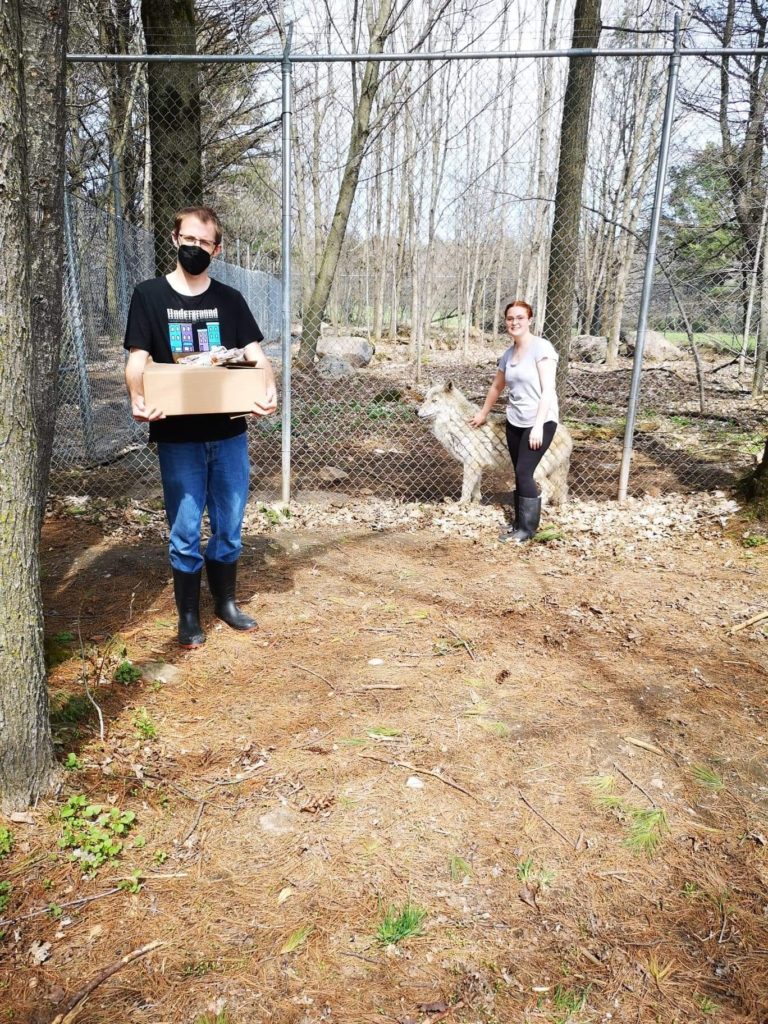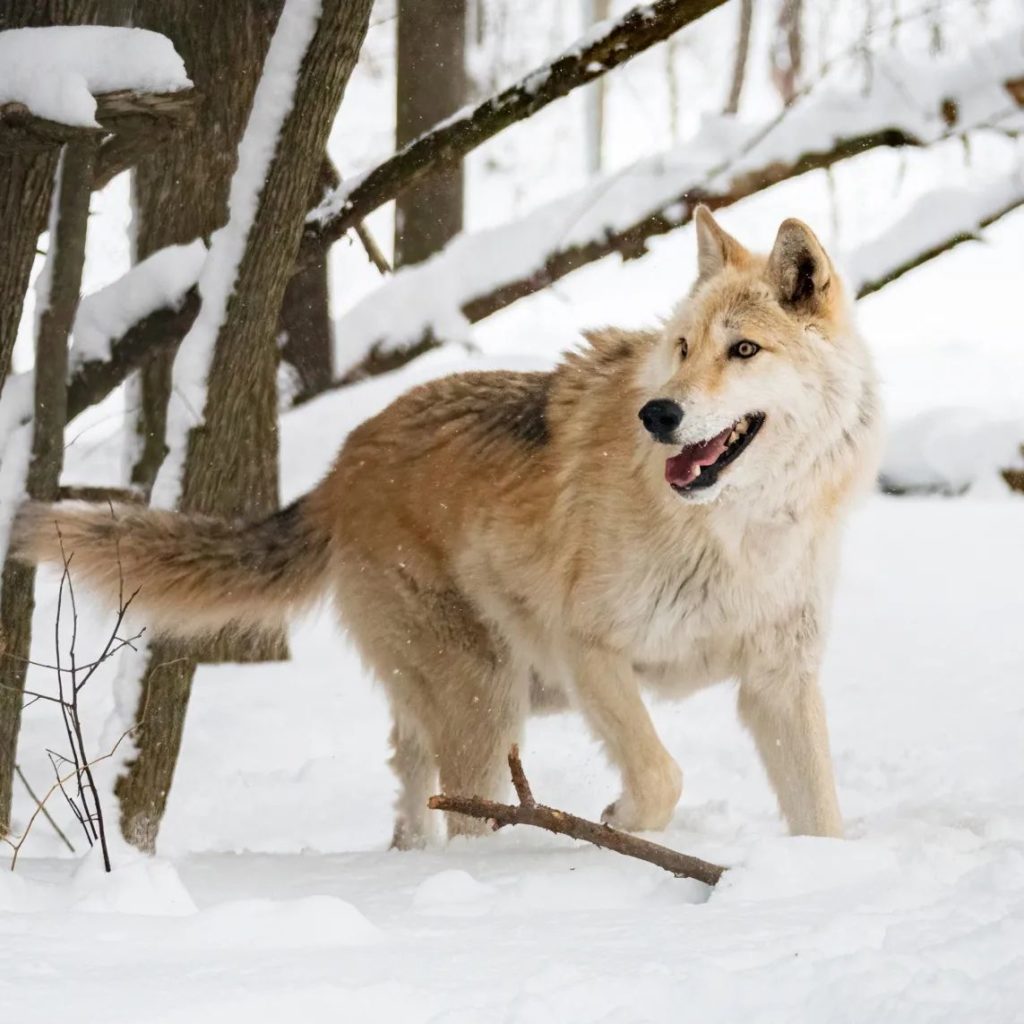Welcome to the fourth column featuring the animals of Speaking of Wildlife, various native species that can’t possibly be released into nature.
Today we’ll be looking at our physically largest resident: Maverick, our grey wolf. Or just ‘wolf.’ It doesn’t have to be that complicated.
Wolves and humans have a long and odd history, with human emotions towards them switching between admiration and disgust, depending on how much the humans in question rely on raising defenseless, delicious livestock in conveniently-clumped herds.
We humans have a lot in common with wolves in that we’re both hopelessly sociable; we’re both among the few animals dumb enough to hunt via endurance running rather than quick ambushes; and of course we both love singing. Both wolves and humans are also a little unusual in just how willing they are to accept other animals as being companions, another example of this sociability.
In fact, some humans became so fond of wolves that we kept them around permanently and bred some of them into ridiculous little dogs that can barely breathe due to their deformed noses, or that can barely give birth due to their tiny hips, or that are expected to spend their time protecting livestock from wolves. Sometimes we have funny ways of showing that we care, don’t we?
Grey wolves are the largest living canids and can be found all across northern North America and Eurasia, with regional variation in size tending to increase the farther north you go, and with Eurasian wolves tending to be a little bit larger on average. Some degree of size is also dependant on regional hybridization as wolves are very much interfertile with several other canids. Beyond the well-known cases of dogs and coyotes, depending on location, wolf populations also contain varying amounts of golden jackal genes. This can get to the point where some regional wolf subspecies (of taxonomic dispute), such as the eastern wolf of Algonquin Park fame and the red wolf of the American southeast, are believed to be near-even hybrids containing half-and-half coyote and wolf DNA.
Regardless of habitat, background, or size, grey wolves are apex predators, feeding on everything from musk ox, moose and bison to rodents, duck eggs, and frogs. Some coastal and island populations in Alaska and British Columbia even enjoy a healthy amount of salmon and other marine life in their diet.
Maverick, Speaking of Wildlife’s grey wolf, is a big, big boy – approximately one hundred and ten pounds, most of which is muscle (unless it’s winter, when most of it is also fur). But he came to us much, much, much smaller at just one pound, so young that his eyes hadn’t even opened.
Maverick was born a member of the protected wolf pack at the Haliburton Forest Wolf Centre, but the pack had run afoul of wolf politics and were not working together to care for him and his six siblings. Maverick wasn’t injured in the following dispute, but he and some of his siblings were extracted from the enclosure when senior pack members began putting the pups lives at risk by removing them from the den and leaving them unattended, with little mobility, let alone the capacity for independent living. Upon making this difficult decision, the Wolf Centre sought reputable organizations to care for the extracted pups, and Speaking of Wildlife was fortunate enough to be one of those facilities.
Maverick opened his eyes a few days later and the first thing he saw in his life was my boss Krystal so now he thinks she’s his mommy, which is still adorable even over five years later. Sometimes he tries to lick her through his fence in worshipful adoration, which she will graciously accept.
Of all Speaking of Wildlife’s animals, Maverick is possibly the one resident I can boast of sharing the best relationship with; staff members are encouraged to run alongside the fence with him for companionship and enrichment (as long as it’s not too hot out for him), and I’ve managed to so thoroughly associate myself with this that merely walking too close to his enclosure will bring him bouncing towards me and repeatedly smacking the ground with his feet in a play bow.
He much prefers to chase rather than be chased, and on only one occasion has he managed to get tired before I did. The downside to all this is that I’m also the only member of staff who can’t give him ear and back skritches through the fence; he won’t stand still for me, the big doofy baby. He is a big blonde beautiful himbo bozo and I love him to bits.
Oh, and for the record: unless you’re a staff member who’s been here for quite some time? Please don’t try and touch him, hierarchy and pack dynamics are instinctive, and we really can’t say what will happen.
Speaking of Wildlife provides permanent sanctuary to non-releasable Ontario wildlife and has been delivering interactive wildlife education since 1989. For more information, to support, or to book at tour, go to https://www.speakingofwildlife.ca/.


